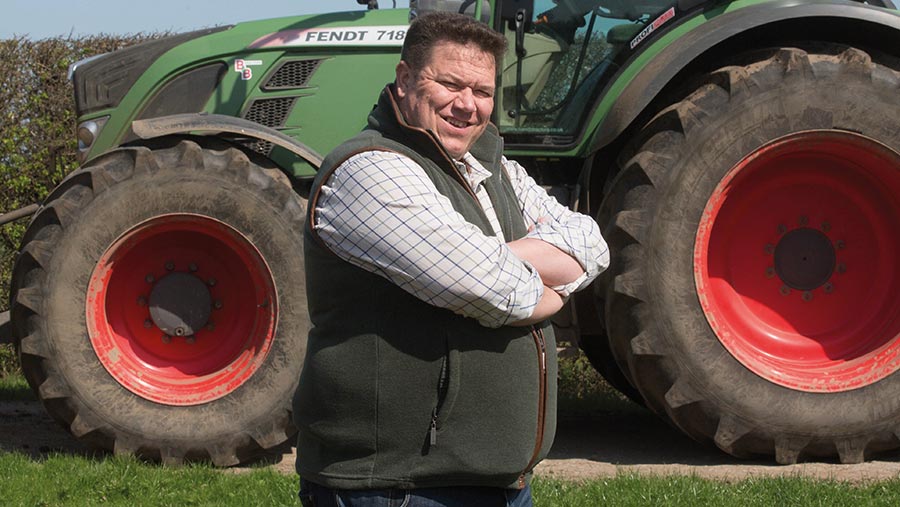Farmer Focus: Elderflowers need a miracle after frosts and rain
 Keith Challen © Tim Scrivener
Keith Challen © Tim Scrivener I’m beginning to sound like a stuck record. The farm is currently the wettest I’ve seen in spring during the 12 years I’ve been here – 31mm fell on the early May bank holiday and it was already wet prior to that.
Fungicide and plant growth regulator timings have been more about travelling conditions than growth stages with T1s ending up being late.
We managed to get 90% of our planned spring barley acreage drilled over the Easter weekend and about 80% of that went in well. The less said about the rest the better.
See also: Farmer’s maize trial shows vital need for treated seed
We even managed to get a small area rolled. Easter Sunday was the only day so far in 2023 we’ve seen dust and then it was only for an hour or two.
The farm digger is probably the only machine not to be halted by the weather – in fact, it has probably done more hours than the tractors since Christmas.
It is turning out to be one of the best investments we’ve made and quite frankly I’m not sure how we managed without it.
We also hired a drain jetting machine last month, which is a great bit of kit. There was something uniquely satisfying watching metre after metre of pipe disappearing up the drains.
However, I suspect farming practices of the 1980s involving a CAT D8 and a reclamation spec subsoiler have taken their toll on a great number of farm drains, having found quite a number completely destroyed.
The old farm hands used to say: “A cold, wet May gives plenty of corn and hay”. Well, lets hope that works for elderflowers, too.
Rapid growth in February was soon spoilt by frosts and excessive rainfall, forcing a slowdown in growth.
They seemed to come back to life over the Easter weekend, but once again that came to an abrupt halt with a couple of rouge frosts and excessive rainfall.
As things stand today, we have less florets forming than usual and they are at least 14 days behind in growth stage. Right now it feels like we need nothing short of a miracle.


